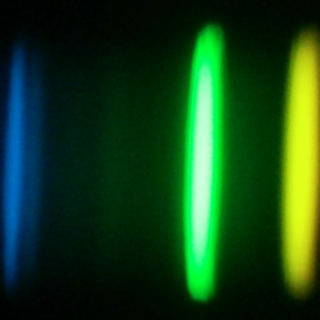Bibcode
Hayes, Christian R.; Masseron, Thomas; Sobeck, Jennifer; García-Hernández, D. A.; Allende Prieto, Carlos; Beaton, Rachael L.; Cunha, Katia; Hasselquist, Sten; Holtzman, Jon A.; Jönsson, Henrik; Majewski, Steven R.; Shetrone, Matthew; Smith, Verne V.; Almeida, Andrés
Bibliographical reference
The Astrophysical Journal Supplement Series
Advertised on:
9
2022
Citations
53
Refereed citations
45
Description
Elements with weak and blended spectral features in stellar spectra are challenging to measure and require specialized analysis methods to precisely measure their chemical abundances. In this work, we have created a catalog of approximately 120,000 giants with high signal-to-noise Apache Point Observatory Galactic Evolution Experiment (APOGEE) Data Release 17 (DR17) spectra, for which we explore weak and blended species to measure Na, P, S, V, Cu, Ce, and Nd abundances and 12C/13C isotopic ratios. We employ an updated version of the Brussels Automatic Code for Characterizing High-accuracy Spectra (BACCHUS) code to derive these abundances using the stellar parameters measured by APOGEE's DR17 Stellar Parameters and Chemical Abundances Pipeline, quality flagging to identify suspect spectral lines, and a prescription for upper limits. Combined, these allow us to provide our BACCHUS Analysis of Weak Lines in APOGEE Spectra catalog of precise chemical abundances for these weak and blended species, which agrees well with the literature and improves upon APOGEE abundances for these elements, some of which are unable to be measured with APOGEE's current, grid-based approach without computationally expensive expansions. This new catalog can be used alongside APOGEE and provides measurements for many scientific applications ranging from nuclear physics to Galactic chemical evolution and Milky Way population studies. To illustrate this we show some examples of uses for this catalog, such as showing that we observe stars with enhanced s-process abundances or that we can use the 12C/13C ratios to explore extra mixing along the red giant branch.
Related projects

Nucleosynthesis and molecular processes in the late stages of Stellar Evolution
Low- to intermediate-mass (M < 8 solar masses, Ms) stars represent the majority of stars in the Cosmos. They finish their lives on the Asymptotic Giant Branch (AGB) - just before they form planetary nebulae (PNe) - where they experience complex nucleosynthetic and molecular processes. AGB stars are important contributors to the enrichment of the
Domingo Aníbal
García Hernández

Chemical Abundances in Stars
Stellar spectroscopy allows us to determine the properties and chemical compositions of stars. From this information for stars of different ages in the Milky Way, it is possible to reconstruct the chemical evolution of the Galaxy, as well as the origin of the elements heavier than boron, created mainly in stellar interiors. It is also possible to
Carlos
Allende Prieto